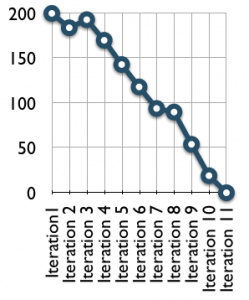Imagine my surprise as we were having dinner last night around 6:40 pm (fettuccine alfredo was on the menu) when I heard a huge “bang” coming from the chimney. The twins, my wife and I quickly got up and went to the living room to discover a dusty Santa Claus putting gifts under the Christmas tree.
“What the heck?”, I said out loud. “Santa, it’s 6:40 pm on December 12th! What are you doing?”, I asked.
“Ho, Ho Ho!” said the old man. “What do you mean? I’m delivering your Christmas gifts. Can’t you see?” said Santa.
“I can clearly see that you are bringing gifts but my question is why on the evening of December 12th? You are 2 weeks early!” I said looking at the various gifts on the floor. All of a sudden I noticed one gift wasn’t even wrapped.
Santa noticed I saw the un-wrapped gift and said “Sorry about this one, there are a few little issues but it should do the job for now anyway – especially considering I am 1 year late!”, he added “… and I apologize since these gifts are for 2009. I’ve really busted my timelines this year”. Whipping his forehead, Santa said, “I don’t have much time to explain but I prepared this document for you to explain everything. I am sure you will find it very useful. My elves spent the last 9 weeks writing the document”.
“They elves wrote a document instead of working on preparing the gifts? Really!”, I said.
Before I could say anything else Santa turned around, moved up the chimney and disappeared. My wife and kids looked at me stuned.
“Daddy, what’s wrong with Santa?” asked Alessia.
“Sweety, daddy doesn’t quit know but I’m sure I will find the answer in the huge manual Santa left us”, I said pointing toward the document.
“Daddy, look! This box is wrapped with toilet paper and it looks like it was open. What’s in there?” asked Giordano. Before I could even speak, he had ripped the paper and opened the gift. “Daddy, these are the pokemon cards I asked for last year. I’m too old to play with these. I don’t need them anymore” said my son angrily.
“Dear Mister. With the greatest magnitude of our sorrows and an unexplainable reason ask for your forgiveness in the event of the delay for the gifts of Christmas and to your honorable family…” I read from the document. ”Honey, this looks like it was translated into bad English. “Do you think Santa outsourced the elves’ work this year?” asked my wife.
Flipping true the book, “It looks like Santa claims that as part of the implicit agreement and based on our list of last year wish list, he delivered what we asked for”, I explained. “As I can see from the documentation, Santa no longer accepts changes in people’s request which is way he delivered what we asked for – even if it is no longer required”, I told my wife.
“Mommy, looks like Santa dropped an envelop on the floor before leaving”, said my daughter as she gave the envelop to my wife.
“Well, I can’t believe it. Santa is asking for a bigger budget and claims he will deliver the remaining gifts around March 14th!”, said my wife clearly upset.
“Wait a minute” I shouted. “It seems to me that Santa should be using Scrum next year. I’ll give him a call on Monday to explain how it could help him deliver on the expectations…”, I concluded before we all went back to a cold dinner.

 The content of the template is updated at the end of each Sprint. Below, the SunSet graph after 6 sprints.
The content of the template is updated at the end of each Sprint. Below, the SunSet graph after 6 sprints.
Recent Comments